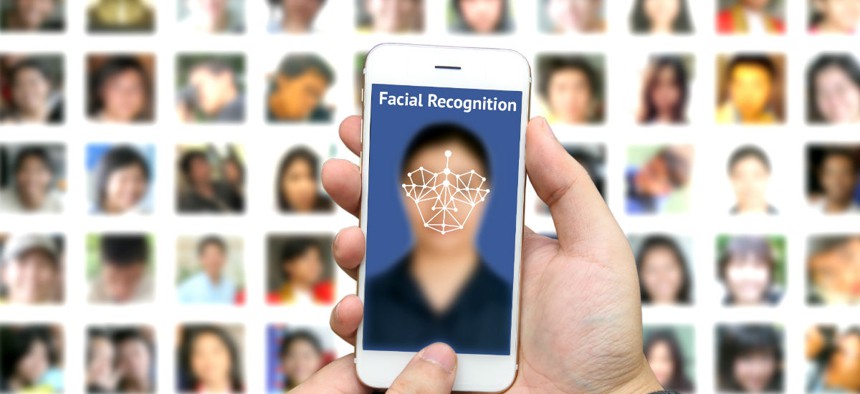New 'Camouflage' Promises to Make You Unrecognizable to Facial-Recognition Tech

Zapp2Photo/Shutterstock.com
It exploits the way face-recognition algorithms work in order to fool them.
Cameras are everywhere. In London, one of the world’s most heavily monitored cities, nearly half a million of them comprise part of the “ring of steel” system that surveils much of the city.
Privacy advocates worry scenarios like this and advancing face-recognition technology could soon allow a modern surveillance state to identify and track anyone. But Adam Harvey, a Berlin-based artist, has developed a camouflage-like pattern he believes will help keep its wearer unrecognizable—or less recognizable, at least—to computer vision.
Called HyperFace, it exploits the way face-recognition algorithms work in order to fool them. The shapes in the pattern read to a computer as “false faces,” hundreds or even thousands of them, distracting from the wearer’s real face and reducing the computer’s confidence that it has an accurate match.

Harvey, who started exploring the concept in 2013, has been working with the studio Hyphen Labs to develop a prototype, which will debut on a scarf at the upcoming Sundance Film Festival. They’re still refining the final pattern, which Harvey believes has uses beyond textiles.
“The HyperFace concept could also be applied to architecture or urban environments,” he says in an email.
On a T-shirt or a wall behind you, this computer camouflage would likely not be enough on its own to flummox a modern surveillance system, according to Anil Jain, an expert on biometrics and professor at Michigan State University. The system would probably process all the faces, your real one included, but that wouldn’t overwhelm it.
“A state of the art face-recognition system—it depends how much money you’re willing to pay for the hardware—can match a million faces a second,” he explains.
What does confuse computer vision, though, is obscuring your face. Jain says a hat that blocks your face from cameras and sunglasses can be enough at times.
“The dark glasses make it impossible to locate the eyes, and if you can’t locate the eyes, then you can’t align the faces,” he explains, referring to the way face-recognition software matches new facial images with those in a database to make an identification.
HyperFace would be most effective used similarly, Harvey says.
“For example, if you wear a scarf which conceals the lower part of your face and possibly the upper portion of your head, you could very slightly reduce the confidence score of your facial boundary," he says. "The pattern printed on the scarf, T-shirt, your earrings, or in the background could then present a false facial region with a higher confidence score than your true face.”

Other attempts to beat facial-recognition software have tried different methods. Researcher Isao Echizen, for example, created glasses studded with near-infrared LEDs that obscure your face to a camera. Those concerned with their privacy could always opt for something like that whenever they walk out in public, though as Jain rightly points out, “then you look like a weirdo.”
Presumably HyperFace lets you maintain privacy a bit less conspicuously. Harvey says HyperFace items could also work with his previous project, CV Dazzle, a series of makeup and hair styles that break up the face so a computer has difficulty isolating its features. Though anyone wearing them is sure to get noticed.


